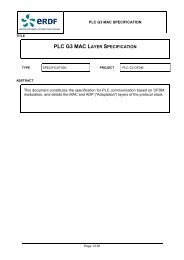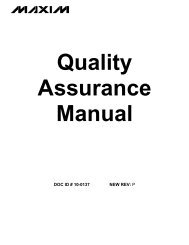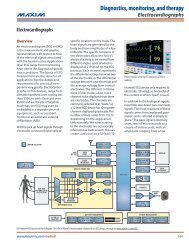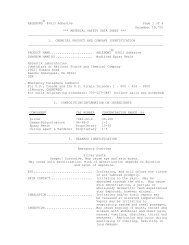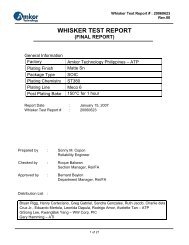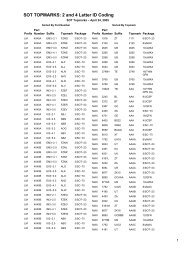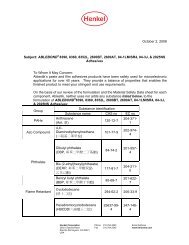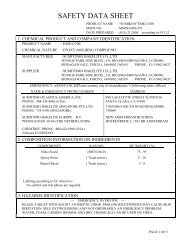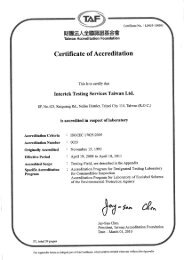MAXQ Core Assembly Guide - Maxim
MAXQ Core Assembly Guide - Maxim
MAXQ Core Assembly Guide - Maxim
You also want an ePaper? Increase the reach of your titles
YUMPU automatically turns print PDFs into web optimized ePapers that Google loves.
<strong>MAXQ</strong> <strong>Core</strong> <strong>Assembly</strong> <strong>Guide</strong>DefinesDefines allow replacement of an identifier with any desired string of text, using the following syntax.#define The value for a #define directive must be a valid Macro identifier that has not been previously used asan equate or macro identifier. Unlike an equate, which can only be used where a constant value would normally beused, a define will be replaced anywhere in an instruction statement, #define or equate definition, or macro body.There are a few restrictions on where #define values will be replaced by Macro.• In order for the identifier to be replaced as its defined value, it must be found as a standalone symbol in theline, and not as part of a larger symbol. For example, if AA is defined as a replacement value, AAA will not beaffected.• Replacement is not performed inside double-quoted strings.• Replacement is not performed inside comments.The replacement operation is performed repeatedly on each line until no more replacement symbols are found.This means that it is possible to create one #define in terms of another #define value.#define A B#define B Cwill result in all occurrences of the symbol “A” being replaced with “C”. Since there is no limit on the number ofreplacement scans, both#define A A+1and#define A B#define B Awill cause Macro failures.Defining RegistersOne typical use of the #define directive is to define mnemonics for the peripheral registers that vary from one<strong>MAXQ</strong> microcontroller to another. These are the registers found in modules M0 to M5, depending on the particularpart. See the User’s <strong>Guide</strong> Supplement for the particular <strong>MAXQ</strong> microcontroller you are using for more details.With the addresses of the new registers determined, the #define directive can be used as follows. (Examples arefrom the <strong>MAXQ</strong>2000).#define PO0#define PO1#define PO2#define PO3#define EIF0#define EIE0M0[0]M0[1]M0[2]M0[3]M0[6]M0[7]and so on. The new register definitions may be placed in an include file for use by any assembly source file,allowing the new registers to be used in the same way as the predefined system registers.move Acc, #01hmove PO0, AccVersion 1.2 32 of 43 March 7, 2007




